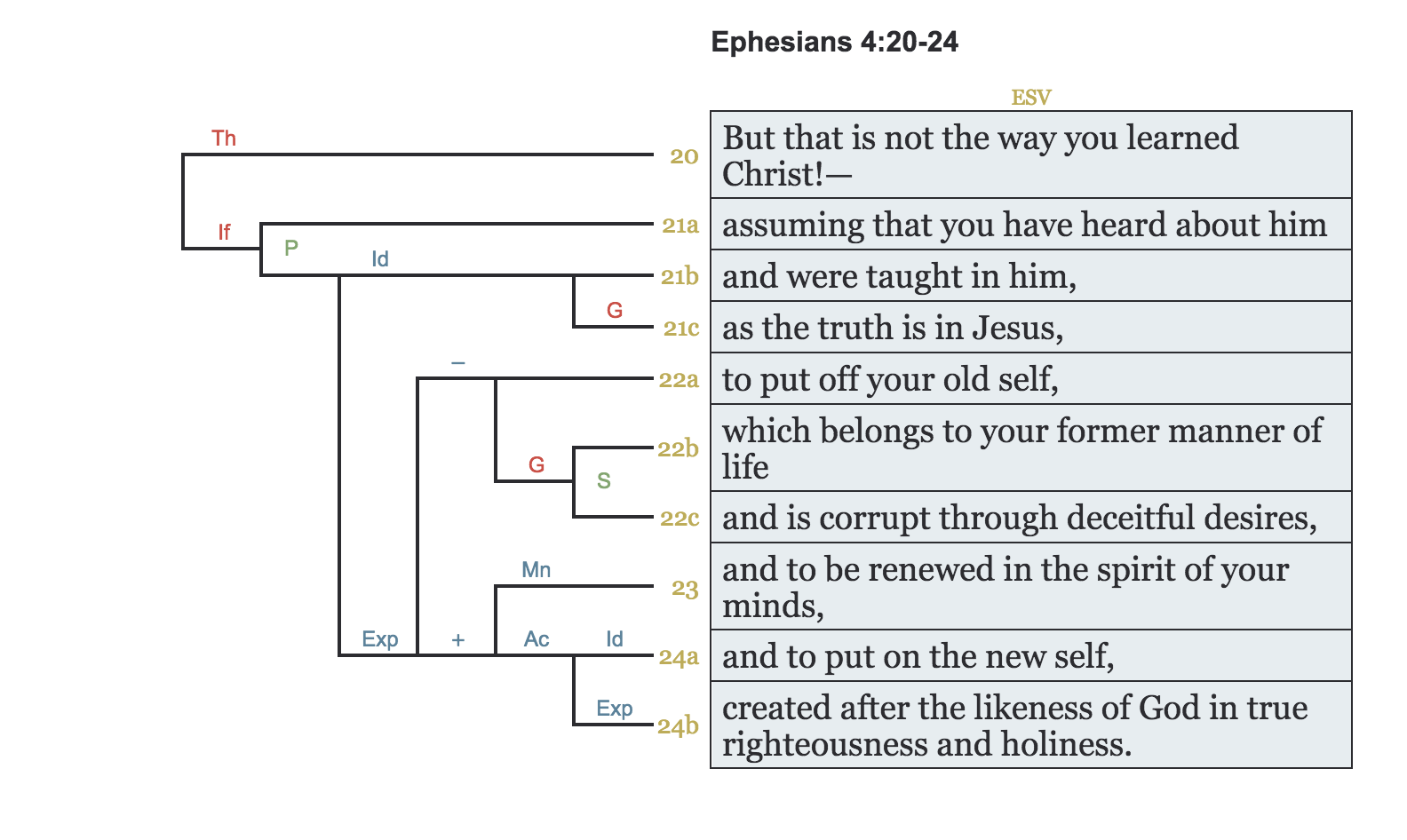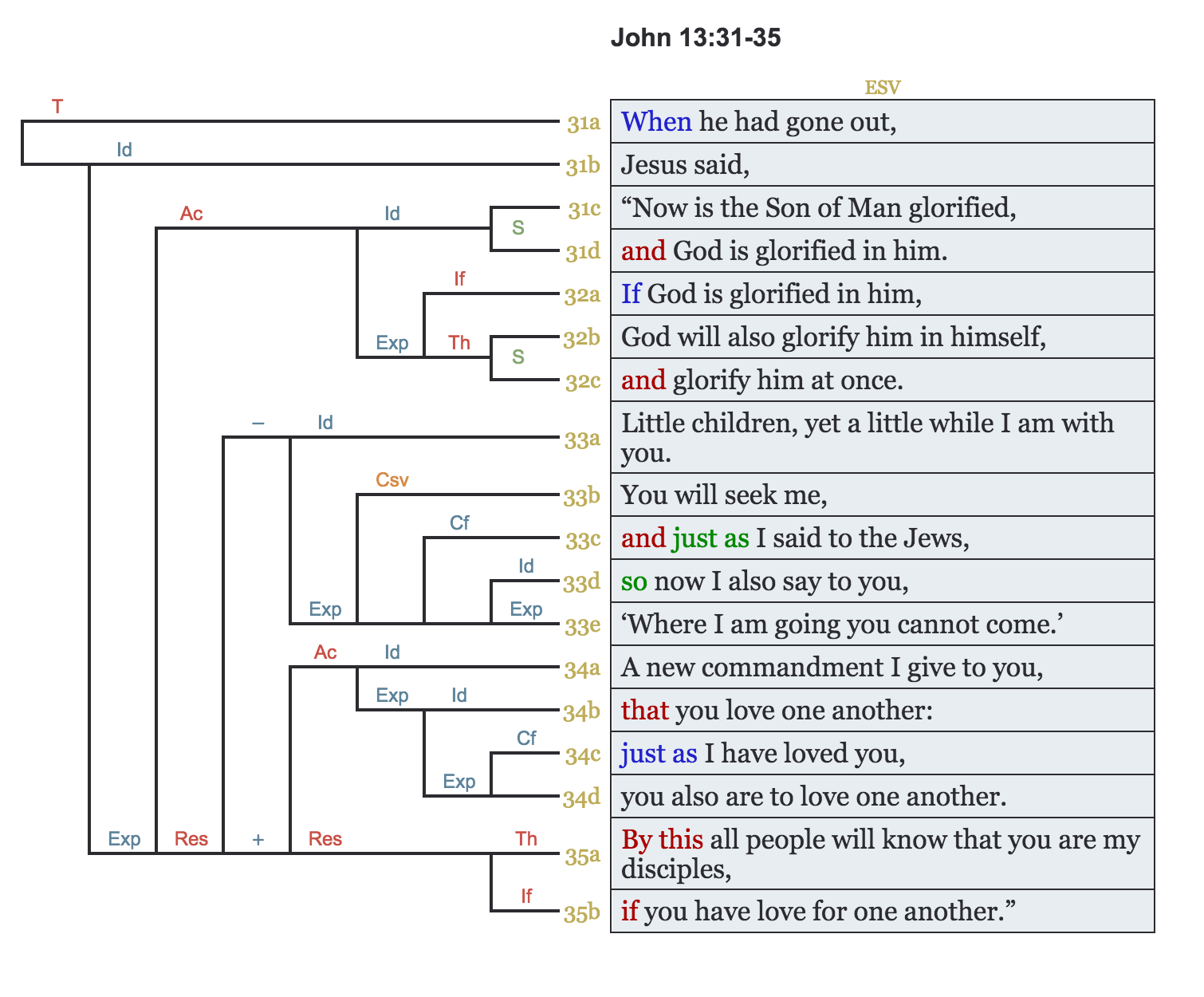Lesson 9 | The main point
Longest line
The main point proposition
Once we have related all the pieces of a bracket by considering how their main points connect to one another, we can find the main point proposition of the passage as a whole by noting the longest horizontal lines. If you have done your bracket correctly, the main point between these two lines will point to the main point proposition of the text.
See if you can locate the main point proposition in these examples.



The main point propositions in the examples above are 7a, 20 and 31b. For the third, 31b does not tell us much other than the fact Jesus said something. But still, that is the main proposition of the text. It is the anchor for what is being communicated. Now as we move to summarizing the message of the text, we will attach some more content to this anchor.
The message of the passage
Determining God's message in a passage is of great importance, and justifies a thoughtful composition of a main point summary. A main point summary is a succinct answer to the question, “What is this passage's message?”
After you have identified the main point proposition, consider what the most important one or two supporting relationships are and see if you can incorporate them to capture the ways they are supporting the big idea. But as you do so, be sure to keep it succinct! Verbose commentaries and homiletical meditations have a great value; but so does a main point summary. Thus, let us distinguish between these different kinds of disciplines. When we are doing a main point summary, let's keep it a summary!
Another aspect that makes for a good main point summary is to frame the summary in the voice of the text. That is, don't write, “This passage is about God's call to present ourselves as living sacrifices to God by discerning his will.” Instead, write, “Present yourselves as living sacrifices to God by discerning his will.” This latter sentence is the proper answer to the question, “What is the message of Romans 12:1-2?”